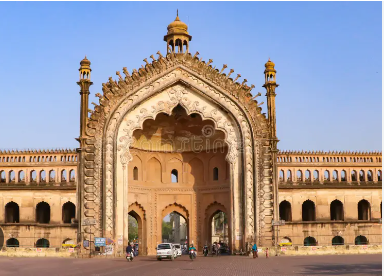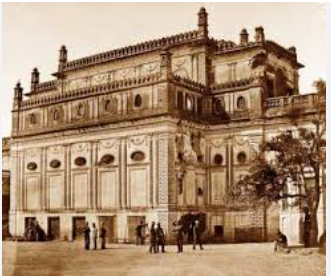According to the World Inequality Lab, the top 1% in India earned 22.6% of the national income in 2022-23, the highest share in the last 100 years.
|
Income inequality |
Wealth inequality |
|
|
|
China economic growth |
|
Despite being the fifth largest economy, India lags behind Sri Lanka, Bhutan, and Bangladesh in terms of human development.
|
Advanced human development |
States with over 7% GSDP growth per year, like Kerala, Tamil Nadu, Andhra Pradesh, Karnataka, Maharashtra, Gujarat, Punjab, and Delhi. |
|
Lag in human development |
States like Jharkhand, Chhattisgarh, Bihar, Madhya Pradesh, Odisha, Uttar Pradesh, and Rajasthan, they have registered less than 5% growth post-liberalization |
Pradhan Mantri Garib Kalyan Anna Yojana launched in 2020 aims to provide free food grains to the poor and needy through the Public Distribution System
Sunita Kejriwal, wife of Delhi Chief Minister Arvind Kejriwal, was appointed as a ‘star campaigner’ by the Aam Aadmi Party (AAP) for its campaign in Gujarat.
There’s no specific law defining who can be a star campaigner.
|
Political parties |
Star campaigners limitation |
|
Recognized parties |
Up to 40 |
|
Unrecognized parties |
Up to 20 |
Representation of the People Act (RP Act) outlines the financial regulations for election campaigning in India.
The decline of private investment, indicated by the Gross Fixed Capital Formation has been a concern for the Indian economy since 2011-12.
|
Status of private investment in India |
|
|
Gross Fixed Capital Formation |
|
Reference
South Korean researchers have developed a high power hybrid sodium-ion battery that can be charged in seconds.
|
|
Lithium battery |
Sodium battery |
|
Availability |
Limited to few countries. |
Nearly 1000 times more abundant |
|
Cost |
Expensive |
Relatively cheaper & can also be extracted from seawater |
|
Energy |
Relatively higher |
Relatively lower |
|
Performance |
Relatively higher |
Relatively lower |
|
Charging |
Slow charge rate |
Relatively faster |
|
Rechargeability |
Longer lifespan and can be recharged more times than sodium batteries |
Shorter lifespan and can be recharged lesser times than lithium batteries |
|
Operating temperature |
Lower range and cause fire at higher temperatures |
Higher range and so can be used in extreme temperatures without the risk of thermal runaway |
|
Safety |
It must be always stored with minimum charge, increasing fire risks. |
It can be stored at zero volt, making it safer. |
|
Environmental impact |
Require rare metals and minerals, thus less environment friendly |
Relatively environment friendly as they use abundant and easily available material |
|
Applications |
For portable devices and electric vehicles |
For large scale energy storage applications |
Reference
WION| Lithium-ion Batteries Vs Sodium-ion Batteries
Centre asks states to monitor, inspect organ transplants involving foreigners.
Form 21 is a key document considered by the Authorisation Committee, which approves the transplants, to show that the donor and recipients are indeed related and there is no commercial trading of organs.
Quick Facts
References
A heritage exhibition was organised on the occasion of World Heritage Day (April 18th) with the theme ‘Discover and experience diversity’ by the Lucknow circle of Archaeological Survey of India (ASI).

General Wali Kothi

References
A recent research reported that big cities in China are sinking under their weight, suffering from moderate to severe subsidence.
|
Land subsidence |
|
Reference
India Today| Big Cities of China are sinking
The 2024 edition of Global Report on Food Crisis (GRFC) was released.
Integrated Food Security Phase Classification (IPC) is a standardised scale developed by UN’s Food and Agriculture Organization for improving food security analysis and decision making.
Acute food insecurity is when a person's inability to consume adequate food puts their lives or livelihoods in immediate danger.
Reference
Preparing for the Union Public Service Commission (UPSC) examination is a rigorous process that requires not just knowledge of various subjects but also a thorough understanding of current affairs. The UPSC syllabus covers a vast range of topics, and current affairs play a significant role in shaping the exam questions. Aspirants need to stay updated with the latest happenings in India and the world to crack the exam successfully. One of the most reliable sources of current affairs for UPSC is the IAS Parliament.
The IAS Parliament is a platform that provides the latest news and insights on Government Policies & Schemes, bills, and acts. It is an excellent resource for UPSC aspirants who want to keep themselves informed about the latest developments in Indian Politics, Indian Economy, and society. The platform provides regular updates on the functioning of the government and its various departments, making it an ideal source for current affairs preparation.
The IAS Parliament covers a wide range of topics, including agriculture, education, health, environment, technology, and more. Aspirants can access the platform through its website or app and stay updated with the Latest News and Information. The platform also offers a daily news digest, which summarizes the most important news of the day. This feature is particularly useful for those who are short on time and need a quick overview of the day and events.
In addition to news updates, the IAS Parliament also offers in-depth analysis and expert opinions on various issues. The platform has a team of experts who provide Insightful Articles on current affairs, which are beneficial for aspirants looking to develop a deeper understanding of a topic. These articles also help aspirants form an opinion on a particular issue, which is useful for the Essay Paper in the UPSC exam.
Apart from news and analysis, the IAS Parliament also provides resources for aspirants to enhance their knowledge of current affairs. The platform has a section on 'Current Affairs for UPSC,' which offers a comprehensive coverage of various topics such as Indian Polity, Economy, and International Relations. These resources are updated regularly, ensuring that aspirants have access to the latest information.
The IAS Parliament also offers a UPSC Quiz section, where aspirants can test their knowledge of current affairs. These quizzes are based on the latest news and help aspirants assess their level of preparation. Aspirants can also participate in UPSC Daily Quizzes and track their progress over time.
The IAS Parliament is an excellent resource for UPSC aspirants who are looking to stay updated with the latest developments in India and the world. The platform provides reliable and comprehensive coverage of current affairs, making it an ideal source for aspirants preparing for the UPSC exam. The resources offered by the platform are not just limited to news and analysis but also include quizzes and resources to enhance knowledge. The platform's user-friendly interface and regular updates make it a must-have resource for every UPSC aspirant.
In conclusion, keeping up with current affairs is a critical aspect of UPSC Preparation, and the IAS Parliament offers a reliable and comprehensive source for the same. Aspirants can leverage the platform's resources to stay informed and enhance their knowledge, making them better prepared to tackle the UPSC exam. IAS Parliament is a one-stop-shop for all UPSC aspirants looking for a comprehensive and reliable source of current affairs information.
Also Read: